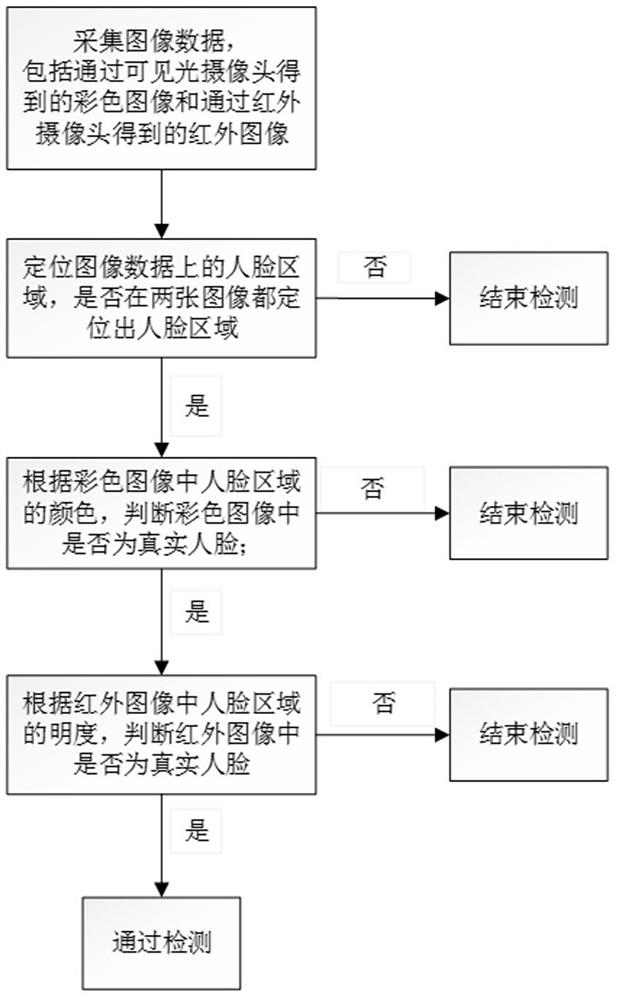Living body detection method and device based on near-infrared camera
A living body detection and near-infrared technology, applied in the field of face recognition, can solve problems such as high complexity, poor recognition ability of printed pictures, and easy to be cheated by video
- Summary
- Abstract
- Description
- Claims
- Application Information
AI Technical Summary
Problems solved by technology
Method used
Image
Examples
Embodiment 1
[0039] see Figure 1 to Figure 4 , a living detection method based on a near-infrared camera, comprising the following steps:
[0040] Collecting image data, the image data includes a color image obtained by a visible light camera and a near-infrared image obtained by a near-infrared camera;
[0041] Locate the face area on the image data, respectively input the color image and the near-infrared image to the multi-task convolutional neural network, and the multi-task convolutional neural network locates the face area on the above two images, if both images are If the face area is successfully located, continue to the next step; otherwise, end the detection; when the face is located on the color image but not on the near-infrared image, it means that this is an attack of forging a face, and there is no need to proceed to the next step detection;
[0042]According to the color of the face area in the color image, judge whether the color image is a real face, preset the filteri...
Embodiment 2
[0051] Further, the multi-task convolutional neural network locates the human face area on the above two images while also locating the area where the human eyes are located; after locating the human face area on the image data, see image 3 , and also judge whether the color image and the near-infrared image are real faces according to the bright pupil effect (the reflection of the human eye on the near-infrared is not as strong as that of the image, so the whites of the real human eyes in the near-infrared image will be larger than those in the color image Dark), the specific steps are:
[0052] Calculate the average brightness of all pixels in the human eye area in the color image and the near-infrared image respectively. In this embodiment, the calculation formula for the average brightness is specifically:
[0053]
[0054] Among them, δ represents the entire eye area, I(k) represents the brightness value of the pixels on this area, and n represents the number of all p...
Embodiment 3
[0058] Further, after locating the face area on the image data, an edge detection algorithm is also used to judge whether the near-infrared image is a real face. The specific steps are:
[0059] see Figure 4 , find out the pixels that constitute the contour of the face in the near-infrared image (according to the open source edge detection algorithm canny), if the number of pixels that constitute the contour of the face is greater than the threshold (in this embodiment, the threshold is specifically 50), then it is considered The near-infrared image is a real face; otherwise, end the detection.
[0060] The progress of this embodiment lies in that the edge detection algorithm is used to enhance the screening of near-infrared images, improve the accuracy rate, and enhance the detection ability.
PUM
 Login to View More
Login to View More Abstract
Description
Claims
Application Information
 Login to View More
Login to View More - R&D
- Intellectual Property
- Life Sciences
- Materials
- Tech Scout
- Unparalleled Data Quality
- Higher Quality Content
- 60% Fewer Hallucinations
Browse by: Latest US Patents, China's latest patents, Technical Efficacy Thesaurus, Application Domain, Technology Topic, Popular Technical Reports.
© 2025 PatSnap. All rights reserved.Legal|Privacy policy|Modern Slavery Act Transparency Statement|Sitemap|About US| Contact US: help@patsnap.com



